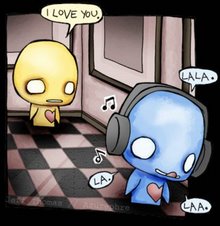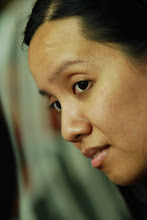 wikipedia says..
wikipedia says..A horn is a pointed projection of the skin on the head of various mammals, consisting of a covering of horn (keratin and other proteins) surrounding a core of living bone. True horns are found only among the ruminant artiodactyls,[citation needed] in the families Antilocapridae (pronghorn) and Bovidae (cattle, goats, antelope etc.). These animals have one or occasionally two pairs of horns, which usually have a curved or spiral shape, often with ridges or fluting. In many species only the males have horns. Horns start to grow soon after birth, and continue to grow throughout the life of the animal (except in pronghorns, which shed the outer layer annually, but retain the bony core). Similar growths on other parts of the body are not usually called horns, but spurs, claws or hoofs.
The term "horn" is also popularly applied to other hard and pointed features attached to the head of animals in various other families:
- Giraffidae: Giraffes have one or more pairs of bony bumps on their heads. These are covered with furred skin, and although they look as if they ought to have horns on them, they do not.
- Cervidae: Most deer have antlers, which are not true horns. When fully developed antlers are dead bone without a horn or skin covering; they are borne only by adults (usually males) and are shed and regrown each year.
- Rhinocerotidae: The "horns" of rhinoceroses are made of keratin and grow continuously, but do not have a bone core.
- Ceratopsidae: The "horns" of the Triceratops were extensions of its skull bones although debate exists over whether they had a keratin covering.
- Horned lizards (Phrynosoma): These lizards have horns on their heads which have a hard keratin covering over a bony core, like mammalian horns.
- Monodontidae: Male narwhals have a single long tusk, a modified tooth, which looks like a horn, and is twisted like that of the fictional unicorn.
- Insects: Some insects (such as rhinoceros beetles) have horn-like structures on the head or thorax (or both). These are pointed outgrowths of the hard chitinous exoskeleton. Some (such as stag beetles) have greatly enlarged jaws, also made of chitin.
Many mammal species in various families have tusks, which often serve the same functions as true horns, but are in fact oversize teeth. These include the Moschidae (Musk deer, which are ruminants), Suidae (Wild Boars), Proboscidea (Elephants), Monodontidae (Narwhals) and Odobenidae (Walruses).
Polled animals or pollards are those of normally-horned (mainly domesticated) species whose horns have been removed, or which have not grown. In some cases such animals have small horny growths in the skin where their horns would be – these are known as scurs.
Animals have a variety of uses for horns and antlers, including defending themselves from predators and fighting members of their own species for territory, dominance or mating priority. In addition, horns may be used to root in the soil or strip bark from trees. In animal courtship many use horns in displays. For example, the male blue wildebeest reams the bark and branches of trees to impress the female and lure her into his territory. Some animals with true horns use them for cooling, the blood vessels in the bony core allowing the horns to function as a radiator.

i say..
animals are not the only creatures with horns.
i wonder where i can find a pair of these.. hahaha..
then again, i don't think i need look for them anymore *sigh* from the bottom of my hypothalamus.. thank you. i mean it.














No comments:
Post a Comment